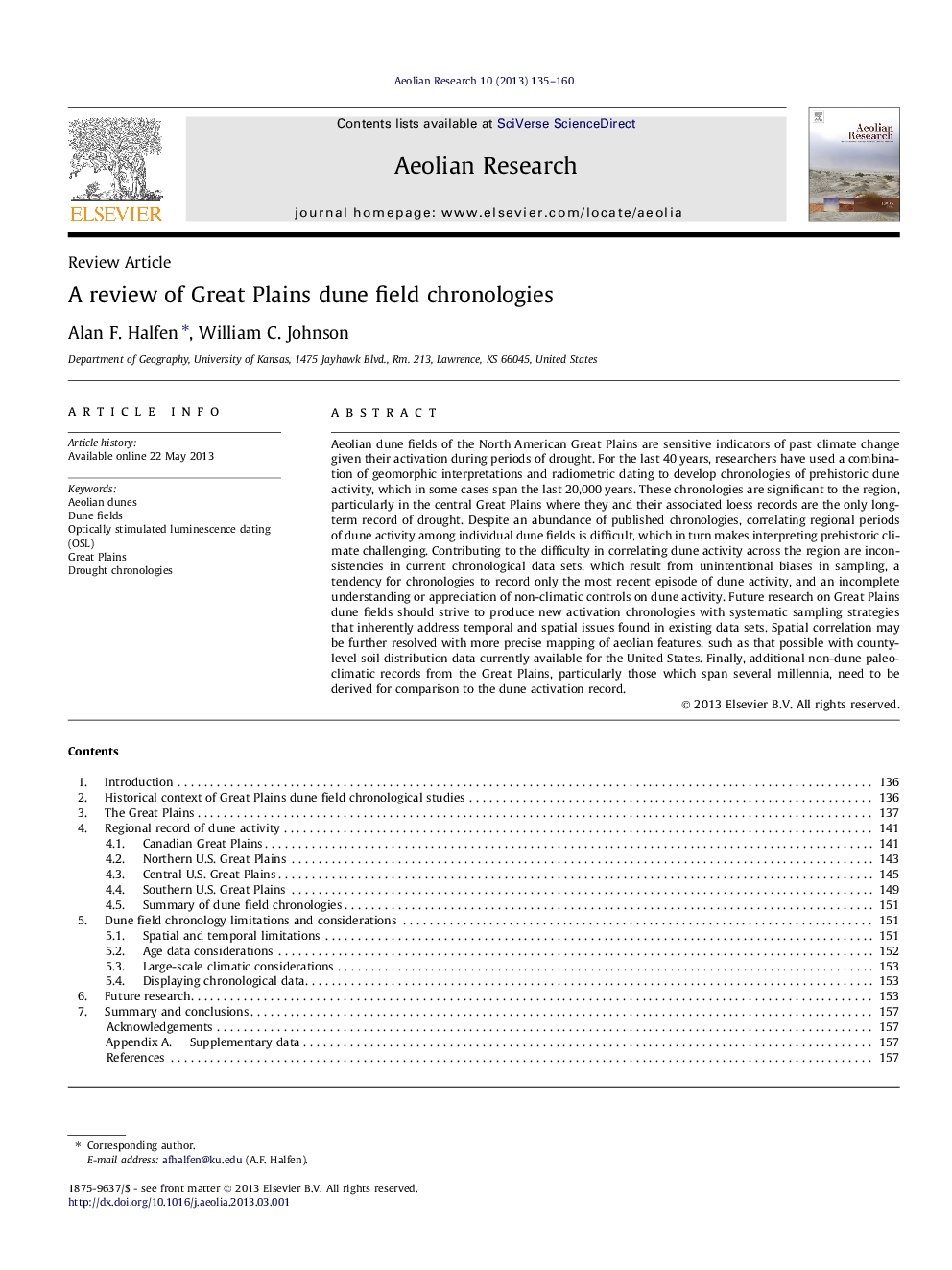| Article ID | Journal | Published Year | Pages | File Type |
|---|---|---|---|---|
| 4673825 | Aeolian Research | 2013 | 26 Pages |
Aeolian dune fields of the North American Great Plains are sensitive indicators of past climate change given their activation during periods of drought. For the last 40 years, researchers have used a combination of geomorphic interpretations and radiometric dating to develop chronologies of prehistoric dune activity, which in some cases span the last 20,000 years. These chronologies are significant to the region, particularly in the central Great Plains where they and their associated loess records are the only long-term record of drought. Despite an abundance of published chronologies, correlating regional periods of dune activity among individual dune fields is difficult, which in turn makes interpreting prehistoric climate challenging. Contributing to the difficulty in correlating dune activity across the region are inconsistencies in current chronological data sets, which result from unintentional biases in sampling, a tendency for chronologies to record only the most recent episode of dune activity, and an incomplete understanding or appreciation of non-climatic controls on dune activity. Future research on Great Plains dune fields should strive to produce new activation chronologies with systematic sampling strategies that inherently address temporal and spatial issues found in existing data sets. Spatial correlation may be further resolved with more precise mapping of aeolian features, such as that possible with county-level soil distribution data currently available for the United States. Finally, additional non-dune paleoclimatic records from the Great Plains, particularly those which span several millennia, need to be derived for comparison to the dune activation record.
